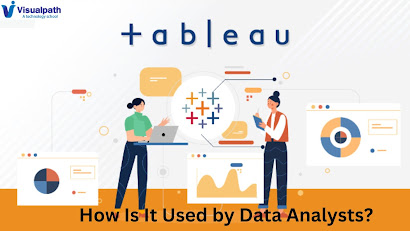Data Life Cycle: Power of Big Data Analytics
Introduction:
Big Data
analytics comes
into play, offering a structured approach to extract actionable insights from
large and complex datasets. At the heart of Big Data analytics lies the Data
Life Cycle, a systematic process that guides organizations from data
acquisition to deriving valuable insights. - Data
Analytics Online Training
Data Acquisition: The journey
begins with data
acquisition, where organizations gather raw data from various sources
such as social media, sensors, transactional systems, and more. This stage
involves identifying relevant data sources, collecting data in real-time or
batch processes, and ensuring data quality and integrity. While coding may be
employed for custom integrations or complex data transformations, many tools
offer intuitive interfaces for data ingestion and integration, allowing users
to connect to different data sources seamlessly. - Data
Analytics Course in Hyderabad
Data Storage: Once data
is acquired, it needs to be stored efficiently for future processing and
analysis. Traditional relational databases may struggle with the scale and
complexity of Big Data,
leading to the adoption of distributed storage systems like Hadoop Distributed
File System (HDFS) or cloud-based solutions such as Amazon S3 and Google Cloud
Storage. These platforms provide scalable storage capabilities without
requiring users to write extensive code for managing data infrastructure.
Data Processing: Data
processing involves transforming raw data into a format suitable for analysis.
This stage includes tasks like cleaning, filtering, aggregating, and
structuring data to uncover meaningful patterns and trends. While coding
languages like Python and R are commonly used for data processing tasks, visual
data preparation tools like Apache NiFi, Talend, or Alteryx offer drag-and-drop
interfaces, allowing users to perform complex data transformations without
writing code. - Data
Analytics Online Training in India
Data Analysis: With data
prepared and processed, the next step is to perform analytics to extract
insights and derive value. While statistical programming languages like R and
Python are popular choices for data
analysis, modern analytics platforms such as Tableau, Power BI, and
Google Data Studio provide intuitive interfaces for creating visualizations,
dashboards, and reports. These tools enable users to explore data
interactively, uncovering hidden patterns and correlations without the need for
extensive coding skills.
Insight Generation: The final
stage of the Data Life Cycle involves interpreting the analysis results to
derive actionable insights. Here, business users collaborate with data analysts
and domain experts to translate findings into strategic decisions and
operational improvements. Advanced analytics techniques like machine learning
and predictive modeling may be employed to forecast future trends and outcomes,
guiding organizations towards data-driven decision-making. - Data
Analytics Course Online
Conclusion:
In
conclusion, Big Data analytics offers a transformative approach to harnessing
the power of data across its life cycle. By understanding and navigating the
stages of the Data Life Cycle, organizations can unlock valuable insights
without the need for extensive coding expertise.
Visualpath is the Leading and Best Institute for learning Data Analytics
Online in Ameerpet, Hyderabad. We provide Data Analytics Online Training Course, and you will get the best course at an affordable cost.
Attend Free Demo
Call on - +91-9989971070.
Visit : https://www.visualpath.in/data-analytics-online-training.html
WhatsApp : https://www.whatsapp.com/catalog/919989971070/




Comments
Post a Comment